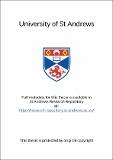Counterimmunoelectrophoresis in the detection of surface antigens of Neisseria gonorrhoeae
Abstract
The study was initiated to investigate the possibility of developing a new serological method for the diagnosis of infection caused "by Neisseria gonorrhoeae. A full description of the organism is given, with regard to its "biochemical and serological characteristics, and its pathogenicity and disease pathology. A resume of the methods used for isolation and identification of the organism is presented together with an ' evaluation of the reliability of each method. The rationale of the method under investigation, using a counterimmunoelectrophoresis system to detect capsulate Neisseria gonorrhoeae in infectious exudates, is discussed.
A full investigation of capsule-staining methods was undertaken in order to identify reliably capsulate organisms in vivo and in vitro; the most reliable method being found to be the India ink stain.
A number of capsule-promoting media were developed and examined to ascertain their capacity to sustain rapid, luxuriant growth of capsulate N. gonorrhoeae for use in raising antibodies, in rabbits, to the N. gonorrhoeae capsule, using both capsulate whole cells and purified capsular material.
A description of the use of the counterimrronoelecirophoresis system in assessing the reactivity of the antisera raised in rabbits towards capsulate N. gonorrhoeae strains and strains of other bacterial species is given, together with possible reasons for the cross-reactivity of both sera toward the other bacterial species.
A discussion is presented of the possible use of the N. gonorrhoeae capsule in vaccine development and suggested lines of further research into the biochemical and serological make-up of the capsule.
Type
Thesis, MSc Master of Science
Collections
Items in the St Andrews Research Repository are protected by copyright, with all rights reserved, unless otherwise indicated.

